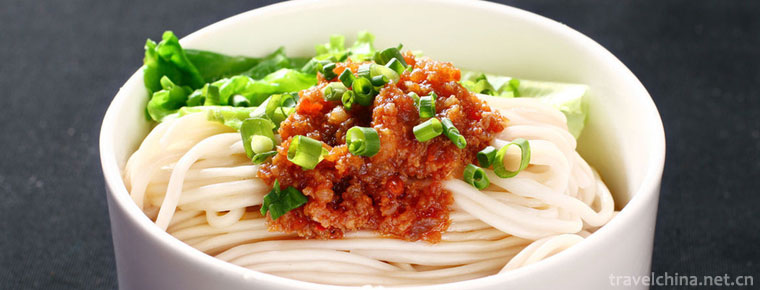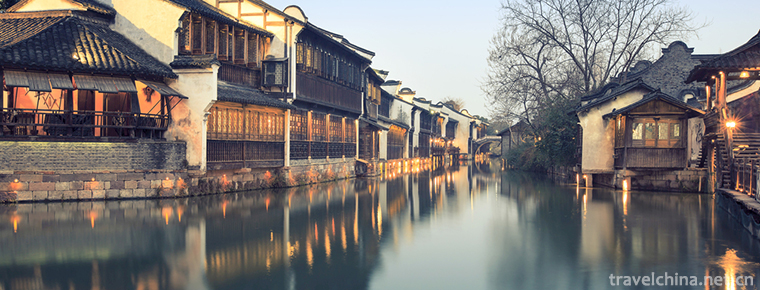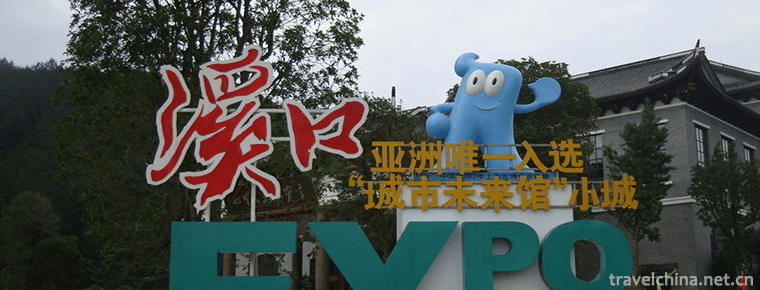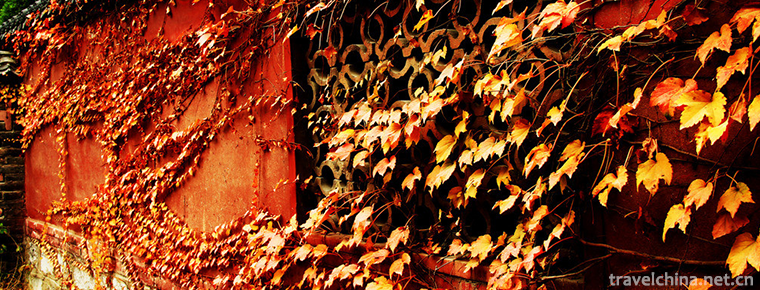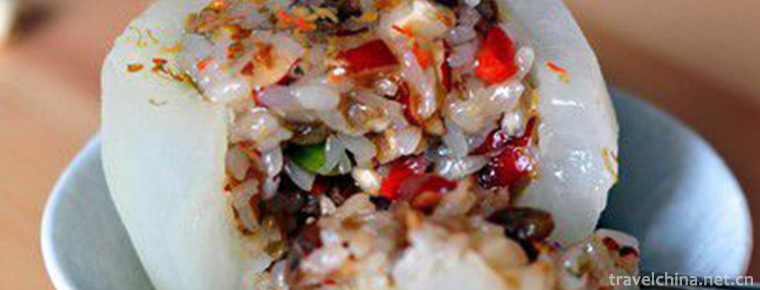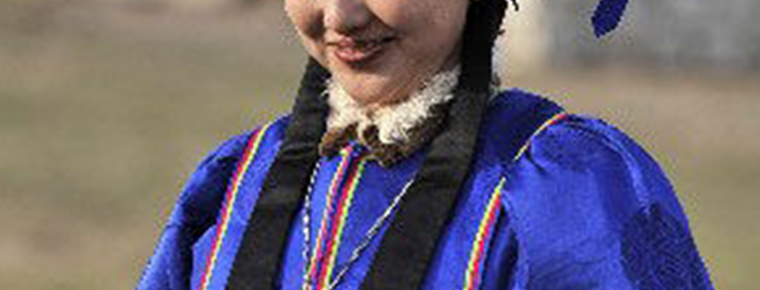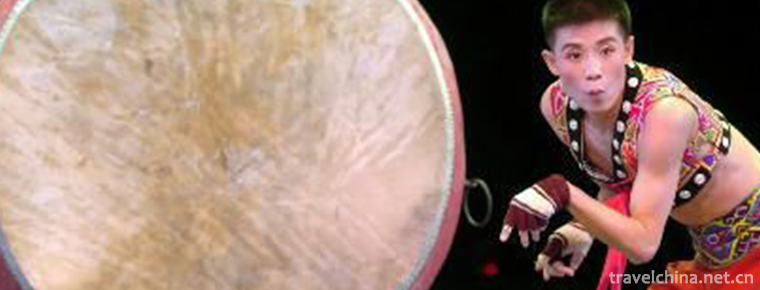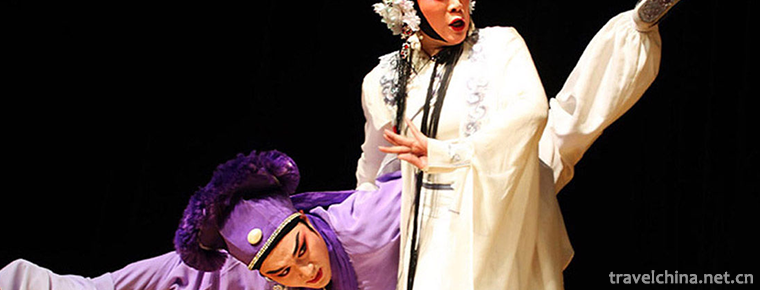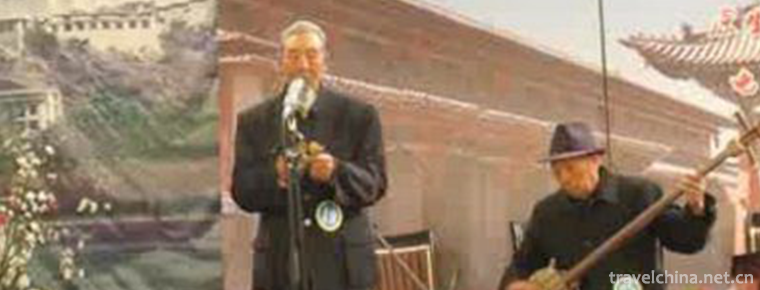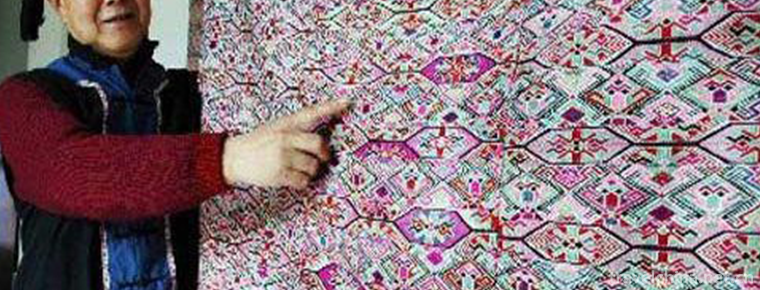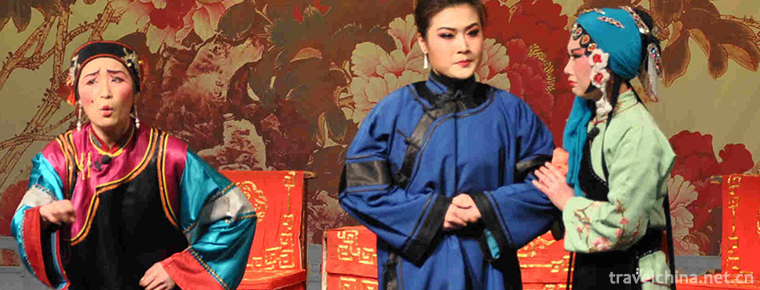Turtle peak Scenic Area
Turtle peak Scenic Area
Guifeng Scenic Spot is located in the southwest of Yiyang County, Jiangxi Province, beside 320 National Highway, 311 Highway and Zhejiang-Jiangxi Railway. It is 10 kilometers away from Yiyang County and has a total area of 136 square kilometers. It is an integral part of the Longhushan-Guifeng Geopark of the World Geopark and the World Natural Heritage Site "Danxia of China". It is also a national scenic spot, a national AAAAA tourist attraction, a National Forest Park and a national demonstration base for patriotic education.
Turtle Peak is named for its numerous tortoise-like hieroglyphic stones and the fact that the whole scenic area looks like a giant tortoise from afar. Known as the "thirty-six peaks and seventy-two scenery" theory, it combines "strange, dangerous, clever and ingenious" in one, and is known as "tortoise peak on the river is rare under the world" and "natural bonsai". With its unique natural landscapes and profound cultural connotations of "No Mountain, No Turtle, No Stone, No Turtle", it has become a recommended scenic spot for many famous dramas such as Visiting Saint Xu Xiake and TV series "Journey to the West".
Development history
From the cultural relics left by Yaowu Shang and Zhou Dynasties, we can see that Guifeng was inhabited in Shang and Zhou Dynasties, engaged in hunting, planting and other productive labor, and created primitive civilization.
The development of Guifeng in Buddhism began in the Liang Dynasty. Cao Zen Master planned to build a temple in Guifeng, and Maofan Zen Master built Lingsheng Temple in the Tang Dynasty. Since Tang Dynasty, the incense has been booming. Guifeng Temple in Song Dynasty has become one of the famous temples in Jiangnan. In Ming Dynasty, the temples were expanded, and the Qing Dynasty continued to flourish. Due to the development of Buddhism, the scenic spots and wonders of Guifeng are also known to the world. Many famous officials and poets have been attracted. The number of tourists of Guifeng has increased from generation to generation, and the popularity of Guifeng has increased accordingly. Celebrities of the Tang, Song, Ming and Qing dynasties left behind many poems and inscriptions, which formed a long corridor of cliff stone inscriptions.
After liberation, the scale of development of Guifeng expanded. Highways were built from County town to Guifeng. A wide tunnel of more than 100 meters was excavated under the exhibition flag peak. Guifeng Lake and outer Lake were enclosed, covering an area of about 70 acres. Office buildings, auditoriums, guest houses, libraries, stadiums, restaurants and shops were built in the center of the scenic spot. Bridges, pavilions and boats were built in the lake. In 1957, Guifeng Garden was built with an area of 118 mu. Sika deer farm was established in 1958.
In October 1953, Shangrao Cadre Sanatorium was established. In 1958, two sanatoriums in Nanchang and Jingdezhen were abolished and some staff and equipment were incorporated into Guifeng Sanatorium. After expansion, it was renamed Guifeng Sanatorium in Jiangxi Province. In 1977, the regrouping was managed by the district and renamed Guifeng Sanatorium in Shangrao District. Since 1985, in addition to receiving recuperation and recuperation of cadres, sanatoriums have set up tourism service companies to undertake tourism business.
geographical environment
Topographic geology
Guifeng, a typical Danxia landform, was developed in the late Cretaceous period 135 million years ago. Developing Danxia landscapes such as peak forest, peak cluster, stone pillar, solitary peak, residual stone, residual hill, stone beam, stone wall, perforation, natural bridge, broad valley, quasi-Pinghua lake, etc. .
Scenic climate
Guifeng is a humid monsoon climate area in the middle subtropical region of the Yangtze River. It is often attacked by cold air in the northwest in winter, and has continental climate characteristics. Due to the co-regulation of large area of water and lush forest vegetation, it has the characteristics of no heat in summer, no cold in winter, warm and humid, and distinct seasons. The annual average temperature is 17.9 and the extreme maximum temperature is 40.7 and the minimum temperature is - 8.6 - 7%. The average temperature in January and July is 5.3 and 29.6 respectively. The annual average frost-free period is 262 days, annual sunshine is 1800-1900 hours, annual average sunshine is 1820 hours, average solar radiation is 404.2-467.7 kJ/cm2.
The area has abundant rainfall, high atmospheric humidity, annual average rainfall is 1878 mm, annual average relative humidity is 75%-80%; annual average precipitation days are 160 days, 40 months are plum rain season, thunderstorms in July-August, September to February next year are less rainy season; annual average evaporation is 1648.4 mm. The main disastrous climates are low temperature, high temperature, dry and hot wind, frost, freezing, rainstorm, continuous rain, drought, gale, hail, etc. .
Biological resources
Botany
The floristic composition of Guifeng is very rich. There are more than 140 families and 800 species of higher plants. The floristic composition of Guifeng is mainly of subtropical plants. There are also some ancient and unique components, such as Ginkgo biloba, Bamboo cypress, Pinus tabulaeformis, etc. in gymnosperms, sassafras, Cyclobalanopsis fortunei and Fujian cypress in angiosperms. Especially tall bamboo cypress and southern yew are rare in China. Guifeng's woody plants are listed as 18 species of national protection, and more than 30 species of provincial protection, so it is called "small kingdom of plants".
In the territory of Guifeng, there is a four-season osmanthus, about 10 meters high, 15 meters crown width, 8 branches, lush leaves, four seasons flowering, it is estimated that thousands of years old, is a characteristic plant landscape of Guifeng. An ancient camphor tree, 2.1 meters in breast diameter, 30 meters in height and 36 meters in crown, was planted by Mao Chan, a Buddhist monk in the Tang Dynasty, when he built the Ruixiang Temple. It has a history of more than 1100 years.
The climate of Guifeng is suitable and the terrain is complex. There are many landscape plants with ornamental value in the natural forest. In spring, there are azaleas, roses, peaches, plums, locust, wisteria and so on. In summer and autumn, there are scattered lilies, clusters of gardenia, osmanthus, crape myrtle and so on. Pine, bamboo and plum in winter are plant landscapes with Chinese characteristics .
Animal
According to the county chronicle, there are more than 1000 kinds of animals in Turtle Peak. In addition to general mammals, birds and insects, there are also many rare animals, such as leopard, Sumen antelope, Sika deer, pheasant and Acacia bird.
Humanistic history
Religious culture
In history, Guifeng was the gathering place of Buddhism, Taoism and Confucianism. Buddhism, Taoism and Confucianism mingled in Guifeng. Guifeng is one of the birthplaces of Zen Buddhism. It also has a profound Taoist culture. In Guifeng, Gexian, a famous Taoist relic, remains. Confucianism is also respected in Guifeng. The famous Confucian architectural site is the Duishan Academy of Confucianism .
Drama culture
Yiyang tune, the first of the four Chinese tunes, is a brand new local tune produced by the integration of Nanxi Opera, local dialect, local dialect and local folklore, which was spread in Yiyang area of Jiangxi Province in the late Southern Song Dynasty. It is named "Yiyang Tune" because of its origin. Its prominent feature is "singing in harmony", accompanied by percussion and silk, bamboo, string, wind and other instruments. Its singing is plasticity and high-pitched. It has not only the gentle and graceful charm of the south, but also the generous and passionate temperament of the north. It combines rigidity and softness with ease of play.
According to the Narrative of Southern Ci, there were more than 10 provinces and cities, including Beijing, Hunan, Fujian and Guangdong, in addition to Jiangxi. There are 100 Yiyang Opera repertoires and more than 400 Qupai in Ming Dynasty alone. The famous ones are the Journey to the East, the Journey to the West, the Journey to the East, the Journey to the South, the Journey to the North, the Story of Selling Water, the Story of Jing Chai, Mulian Opera, etc. .
Scenic spots
Natural landscape
Qiufeng reclining Buddha
Full length 416 meters, shoulder height 68 meters, "Mountain is a Buddha, Buddha is a mountain", is the largest natural mountain body found in the world so far .
Wanglangshi
On Wanglang Peak. A stone several feet high was standing on the half-hillside of Guifeng Mountain. The stone resembles a young woman with a dress tied around her waist. Looking ahead, I saw her slim figure, breast protruding, small belly drum, as if pregnant. Looking into the distance with both eyes, Wanlang returns.
- Tin dog looking at the bone
At the entrance of Turtle Peak, beside the flag peak, there is a strange stone on the top of the mountain, which is tens of meters high and looks like a crouching dog. The dog's neck is twisted, its mouth is open and its tongue is spitting. It keeps a close eye on the opposite rib peak. There is a flat-shaped peak opposite, like ribs.
- Xiaozi crying grave
Located in the northeast corner of Guifeng scenic spot, it is located on a hill five miles away from Guifeng. There is a strange stone protruding from the ground, tens of feet tall, like a young man, dressed in mourning clothes, kneeling in front of the grave, kowtowing headache and crying. The grave is a mountain peak, 100 meters away from Xiaozishi, the foot of the peak is a big top garden, like an ancient tomb.
- Eagle Play Chicken
200 meters southeast of Guifeng, there are two huge stones confronting each other. On the right, a stone-like chicken is frightened, its head is hunched in the grass, on the left, a stone-like fierce eagle, its mouth is like a hook, its eyes are fixed on the chicken, and it spreads its wings, and the chicken hears the sound and runs for its life.
- Fuhu bites sheep
Located 800 meters east of Turtle Peak, there are two intersecting boulders on Chao Hao Peak. The front stone is like a gentle little goat, clamping its short tail tightly, making a dying struggle, hoping to escape from the mouth of the tiger. Behind it, a stone-like tiger lay on the ground, biting the goat's buttocks with its big mouth.
- Matoushi
It is situated on the north side of Jinzhong Peak, 600 meters east of Guifeng. Halfway up the hill, a strange stone protruded its head from a crack in the stone, resembling a horse's head, nose and eyes, ears erect, behind the horse's head was a trench of weed, which turned into an upside-down mane on the horse's neck.
- Jade Rabbit Stone
It is on the top of Yutu Peak, 2 kilometers east of Guifeng. There is a stone like a jade rabbit, with a bow, a short tail, crouching, ears erected and nose wings raised.
- Toad's Hope for Heaven
In the center of the Guifeng Scenic Area, the cliff on the left side of Jinping Peak is half of the hillside. There is a huge stone, brown, like a toad. Head up, eyes round, expecting swans to fly; limbs bent, half crouched, half sat, jumping; the top of the hill water poured down, falling in its open mouth.
The first day
Located on the east side of the turtle peak, it is composed of two peaks, namely, the turtle peak and the sleeping cattle peak. The two peaks are closely linked, less than one meter apart, forming a channel tens of meters high and more than 10 meters long. Looking up at the top of the peak in the isthmus, we can only see a line of blue sky. When the mountain breeze comes through the isthmus, it feels cool and comfortable in the summer. Outside the isthmus, there is a vast expanse of heaven and earth, flying red and flowing gold, and gathering green and green. There are three big characters on the wall, one line of sky, which will be carved in 1626 years from tomorrow.
- Echo Valley
It's southeast of Guifeng. The stone wall on the southeast side is inscribed with three characters of "Echo Valley" inscribed by Wang Siren, a visitor of the Ming Dynasty. When people shout in the valley, they can hear four wonderful successive echoes. Four voices are clear and melodious, and the rest of the sounds are spread in all directions. Yuhua Cliff is located 500 meters south of Guifeng. At the foot of the hill on the west side of Jinzhong Peak, there is a cave with an area of about 80 square meters. At the top of the cave, there are springs falling along the 100-meter cliff.
- Silent Spring
Located under the cliff at the tail of Zhenyitai. The water quality is mellow and the tea is delicious. It is said that it has the function of cooling and relieving heat.
Watching the sunrise at Qifeng
Here is a beautiful view of the sunrise in the hills. Peak is not high, only 110 meters, can climb the peak, looking at the rising sun.
Places of historic figures and cultural heritage
Nanyan Temple
Founded in the Jin Dynasty, the temple has more than 40 niches with exquisite shapes. It is the largest cave excavated in natural caves in China. It is known as "the first Buddhist cave in China" and "Dunhuang in the south".
Qiufeng Temple
Located in the landscape center of Guifeng. During the reign of Emperor Qianning (894-895), the Lingsheng Temple was built on the basis of the monk Maofanzhao. In the Southern Tang Dynasty, Xu Xuxue's residence was expanded. In the Song Dynasty, Xianping and Jingdejian (998-1004), the real emperor named Ruixiang Temple. In the Southern Song Dynasty, Chen Kangbo, the prime minister, asked the court to rename it "Xianqin Chongfu Temple". In the Gaozong Dynasty, it was renamed Guifeng Temple. Shu Guiqing, a native of Hongwu in Ming Dynasty, raised funds to build Xiangyuan. Today,
- Recruitment House
Also known as the Nun Cave. Located on the north half of Lingzhi Peak. The cave is the temple with narrow stone steps to climb. There are stone beds, mortars and other stone tools in the cave. The three words "Zhaoyin'an" inscribed on the cave wall were written by Peng Qing during the reign of Qianlong in the Qing Dynasty. There are inscriptions of Lianyungding outside the cave. Legend has it that in the late Southern Song Dynasty, there was a daughter nearby. Her parents forced her to marry. She was determined not to follow suit and ran away from home to get married. She sneaked into this cave and fell into Nihoni.
- Zhenyitai
Located in the northwest of Guifeng, at the foot of Jinping Peak. The platform is an irregular rectangular stone pier, 10 meters long and 3 meters wide, with an area of about 30 square meters. There are stone tables and benches on the table and railings on the periphery. The inside of the platform is close to Wanzhang Qingyan. There are many carvings on the inside of the stage.
General Building
Located near Sisheng Valley. In the Republic of China (1935), Zhao Guantao, the head of a Kuomintang division, built a two-storey villa near Sisheng Valley. The house is made of stone and wood. There are dormitory, dressing room, bathroom, guard room, living room and balcony outside. You can see the peaks on the balcony. When the War of Resistance Against Japan broke out, the general left, the house was uninhabited and the doors and windows collapsed. After liberation, the people's government allocated funds for renovation.
- Guifeng Village
Located near the first line of sky. During the reign of Xianfeng in the Qing Dynasty, Luo Dajiang, the Taiping Heavenly Kingdom, and Li Xiucheng, the loyal king, led their troops into Yiyang, built a stone city near the "first line of sky" of Guifeng, and fought fiercely with the Qing army several times. Existing city wall ruins. Later generations call it "Guifeng Village".
- Cliff stone carvings
There are more than 200 pieces in total. From the mid-Tang Dynasty to the present, many celebrities left inscriptions and calligraphy stone carvings in Guifeng. Most of them were in the area from Zhenyitai to Yitian, forming a stone carving corridor. The stone carvings of Zhenyitai are on the inner wall of Zhenyitai. Since the mid-Tang Dynasty, inscriptions have been inscribed in all dynasties. Calligraphy has seal, official script, regular script, line, grass, exquisite carving skills, different styles. In addition to Zhenyitai and Zhaoyin Temple, there are many inscriptions in various scenic spots, such as Guifeng, Sishenggu, Yitian, Yuanmu Leisheng, Mani Dongtian, Dongtian, Natural Triple, Ruan Xiao and other Large-typed stone inscriptions .
Tourism information
- Native products
1. Turtle Peak Buckling Meat
2. Yiyang New Year Cake
3. Caoxi Rice Sugar
4. Folding bamboo shoots
Farmhouse fun
Yangqiao Restaurant Street (junction of Guifeng Scenic Area and 320 National Highway)
Tickets
Ticket Collection Place: Tourist Center of Scenic Spot
Special population:
A. Free Policy: Holding National Guidance Certificate, General Manager Certificate of Travel Agency, Department Manager Certificate, Tourist Team Driver, Journalist and Children's Certificate of Height under 1.2m to go through relevant formalities without tickets
B. Preferential policies: college students (excluding doctoral and master students), middle school students and primary school students can enjoy a 50% discount on admission tickets with their student certificates; children and officers with height of 1.2-1.4 meters can enjoy a 50% discount on admission tickets; elderly people over 70 years old can get 10 yuan of admission tickets.
Invoice description: Internet booking tickets for scenic spots, outdoor tourism network does not provide invoices
Note: The world's largest recumbent Buddha - Guifeng recumbent Buddha scenic spot ticket 40 yuan per person
Traffic guide
Bus routes
Get off at the railway station and take Bus No. 2 to Guifeng scenic spot and Nanyan scenic spot (15 minutes)
Self driving line
Shanghai Direction
Highway: Through Shanghai-Hangzhou Expressway, Hangzhou-Jinqu Expressway, Zhejiang-Jiangxi Toll Station along Shanghai-Kunming Expressway to Yiyang (Guifeng) Lower Expressway, along 320 National Highway Yingtan direction to Guifeng Scenic Area, the journey is 6-7 hours and 600 kilometers.
Railway: (21:43) Shanghai by 5085 train, 9:40 to Shangrao by Yingtan direction bus to Guifeng scenic spot. Return: Take the bus to Shangrao Station and take the D92 train (leaving at 10:16) to the south of Shanghai (arriving at 13:58).
Ningbo direction
Highway: Shangyong-Jinhua Expressway, Shanhang-Jinqu Expressway to Zhejiang-Jiangxi Toll Station, along Shanghai-Kunming Expressway to Yiyang (Guifeng) Lower Expressway, along 320 National Highway Yingtan direction to Guifeng Scenic Area, 6-7 hours'journey, 570 kilometers' journey.
Railway: 10:10, Ningbo by 1835 train 17:23 to Shangrao by Yingtan direction bus to Guifeng scenic spot. Return: Take bus to Shangrao and take 1836/1837 train (20:20) to Ningbo (05:02).
Wenzhou direction
Highway: Wenzhou Shangliwen Expressway to Jinhua Shanhang Jinqu Expressway to Zhejiang-Jiangxi Toll Station along Shanghai-Kunming Expressway to Yiyang (Guifeng) Lower Expressway, through 320 National Highway Yingtan direction to Guifeng Scenic Area. Travel 5-6 hours, mileage 540 kilometers
Railway: Wenzhou Station takes train 1091/1094 (23:55) to Shangrao (09:29 the next day) and transfers to Yingtan Direction Bus to Guifeng Scenic Area.
Return: Take the bus to Shangrao and take the 2205/2208 train (23:20) to Wenzhou (07:20 the next day).
Jinhua Direction
Highway: Jinhua Shanghang Jinqu Expressway to Zhejiang-Jiangxi Toll Station along Shanghai-Mixed Expressway to Yiyang (Guifeng) Lower Expressway along Yingtan direction of 320 National Highway to Guifeng Scenic Area. Travel 2 hours, mileage 220 kilometers
Railway: Jinhua West by 13:17, K149 train, 15:50 arrived in Shangrao, take the Yingtan direction bus to Guifeng scenic spot.
Return: Take Bus to Shangrao 092 (10:18) to Jinhua West (11:26).
- Nanchang Direction
Highway: Shanghai-Kunming Expressway to Yiyang (Guifeng) Lower Expressway, along 320 National Highway Yingtan direction to Guifeng Scenic Area, a journey of 2 hours, a mileage of 190 kilometers.
Railway: Nanchang Station takes N522 train (07:30) to Yiyang (10:09) and transfers to Guifeng scenic spot by No. 2 bus.
Return: Take Bus No. 2 Yiyang Station 2135 (leaving at 17:51) to Nanchang (arriving at 21:03).
Nanjing Direction
Highway: Nanjing Shangsu-Jiahang Expressway to Hangzhou Shanhang Jinqu-Zhejiang-Jiangxi Toll Station, along Shanghai-Kunming Expressway to Yiyang (Guifeng) Lower Expressway, along 320 National Highway Yingtan direction to Guifeng Scenic Area. Travel 6-7 hours, mileage: 630 kilometers
Railway:
1. Nanjing Railway Station arrives at Shangrao at 11:31 the next day along Zhejiang-Jiangxi Railway by K527 (00:31), and takes the Yingtan direction bus to Guifeng Scenic Area.
2. You can also take the 2182/2183 train (17:20 departure) along the Anhui-Jiangxi line to Yingtan (09:00). Transfer to Shangrao Direction Bus to Guifeng Scenic Area.
Return: Take bus to Yingtan Railway Station and take No. 2181/2184 train (15:05) from Anhui-Jiangxi Line to Nanjing (05:16).
- Wuhan orientation
Highway: from Huanghuang Expressway to Jiujiang Shangchangjiu Expressway to Nanchang Shanghu-Kunming Expressway to Yiyang (Guifeng) Lower Expressway, and from Yingtan direction of 320 National Highway to Guifeng Scenic Area. Travel: 6-7 hours, 590 kilometers.
Railway: Hankou Station by K390/391 train
The direction of Ma'anshan in Wuhu
Highway: From 205 National Highway to Huangshan City, from Shangjingwu to Wuyuan, and from Guifeng Avenue to Guifeng Scenic Spot on Yicha Highway on Shangde Highway.
Railway: Wuhu Station takes No. 2182/2183 train (20:10) to Yingtan (09:00) and rides Shangrao Direction Bus to Guifeng Scenic Area.
Back: Take the bus to Yingtan Station and take the K222/K223 train (22:32) to Wuhu (07:50).













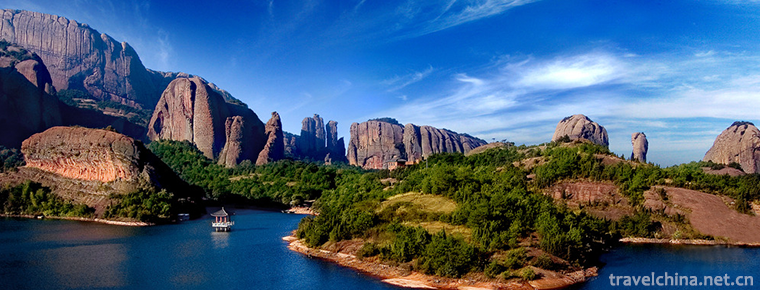
-
Wu zhen ancient town
Wuzhen, located in Tongxiang, Jiaxing City, Zhejiang Province, is located in the "Golden Triangle" of Jiangsu, Zhejiang and Shanghai.
Views: 190 Time 2018-11-11 -
Fenghua Xikou Tengtou Tourist Scenic Area
Fenghua District, Ningbo City, Zhejiang Province, is under the jurisdiction of the established towns, the first batch of famous national landscape tourism towns.
Views: 173 Time 2018-12-07 -
Liao Zhai City
Liaozhai City was invested and built by Pujiazhuang, Zichuan. It is a large-scale famous garden scenic area with gardens as its manifestation and Liaozhai stories as its theme.
Views: 151 Time 2019-01-30 -
Eight treasure pear pot
Babao pear can is a delicious name, belonging to Shandong cuisine. Babao pear cans are exquisitely made and beautifully shaped, mostly for beets at banquets. If high-grade banquet, can be filled in sm.
Views: 236 Time 2019-03-26 -
Ewenki costumes
The Ewenki people belong to the Tungusic race, and their clothing materials are mainly animal skins, as do the Tungusic people such as Manchuria and Xibo..
Views: 265 Time 2019-04-28 -
Folk dance
Generally speaking, it refers to the form of dance which is produced and spread among the people, restricted by folk culture, improvised performance but relatively stable in style, and with self-enter.
Views: 231 Time 2019-06-05 -
Mulao Effort Festival
Mulao people mainly live in Guangxi Zhuang Autonomous Region and call themselves "Ling" and "Jing". Yifan Festival is a unique traditional festival of Mulao nationality, with a str.
Views: 104 Time 2019-06-06 -
Wenzhou opera
Ou Opera has a history of more than 300 years with "written warmth" as its stage language. The more influential traditional plays are Gao Ji and Wu Sanchun, Yanghe Pickup and the modern play.
Views: 90 Time 2019-06-08 -
Qinghai Lower String
Qinghai Xixian, which originated in the late Qing Dynasty, is one of the traditional folk arts native to Qinghai. It is a sitting and singing art, singing alone or in pairs..
Views: 246 Time 2019-06-11 -
Brocade Weaving Skills of Tujia Nationality
Tujia brocade weaving process is complex, in weaving, using the ancient pure wooden waist inclined loom weaving, through spinning and twisting, dyeing, inverting, drawing, reed loading, rolling, picki.
Views: 115 Time 2019-06-23 -
Wuyin Opera
Wuyin opera has a history of nearly 300 years. Its singing style is graceful and charming. It is known as "Northern Yue Opera". Its occurrence, development and finalization have gone through.
Views: 134 Time 2019-06-29
